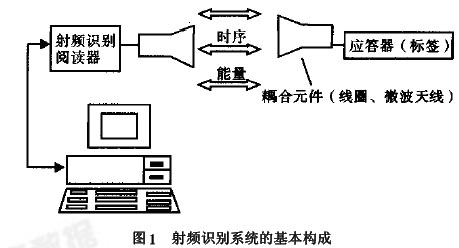[Abstract] This paper introduces a new item identification technology RFID (Radio Frequency Identification) technology, and describes the EPC tag and EPC system related to RFID technology, and the composition and important features of EPC system. Finally, it focuses on the RFID/EPC technology. The role and application in the packaging field.
Keywords: RFID; EPC; packaging
As early as World War II, RFID (infinite radio frequency identification) technology had been used by the U.S. military. Because of its superior performance, the technology began to attract everyone's attention in 2003. IT giants such as IBM, SAP and Microsoft have invested heavily in the development of the technology and its solutions. At present, RFID technology has been widely used in production, retail, logistics, transportation and other industries. With retail giant Wal-Mart's request for all its suppliers to adopt RFID technology before 2008, the trend of replacing bar code technology will be overwhelming. While 70% of Wal-Mart's top 100 suppliers' products are from China, this will surely promote the development of China's RFID technology. At present, China is embarking on basic research, education and training of RFID and EPC technologies, and is actively promoting the development and application of RFID and EPC technologies. Since RFID/EPC technology has very good prospects, this article will focus on its impact on the packaging industry in the logistics field.
1 Introduction to RFID Technology
Radio Frequency Identification (RFID) is a non-contact automatic identification technology. Its basic working principle is to use radio frequency signals and space coupling transmission characteristics to realize automatic recognition of the identified objects. The radio frequency identification system generally consists of two parts, see Figure 1, which are electronic tags and readers. In the practical application of RFID, the electronic tag is attached to the recognized object (surface or inside), and when the electronic tagged item passes the reader readable range, the reader automatically puts the electronic tag in a contactless manner. The appointment identification information is taken out, so as to realize the function of automatically identifying the article or automatically collecting the article identification information [1].

2 Introduction to EPC and EPC Systems
The full name of EPC is Electronic Product Code, the electronic product code, which is a label of RFID. Its product coding standard is proposed by the EPC Global Association of the United States. EPC can provide a unique unique identifier for each physical object (including retail items, logistics units, containers, shipping containers, etc.). The EPC tag itself contains a silicon chip and an antenna. The authorized browsing device can receive the data in the chip. The data stored in the chip can include the physical description of the item, such as quantity, style, size, and color, as well as the origin and shipment of the goods. And distribution, retail and other related information. The identification between the EPC and the RFID reader can be done without physical contact. An EPC is a 96-bit code that is divided into four segments and is a set of numbers consisting of a version number and three other pieces of data (which in turn are domain name administrators, object classifications, sequences).
EPC system refers to the use of RFID radio frequency identification, wireless data communication and other technologies in accordance with the EPC encoding method, based on the computer Internet, to construct a physical Internet covering all things in the world. The EPC system is mainly composed of the following six aspects: EPC coding standard, EPC tag, EPC code, reader, Savant (neural network software), Object Naming Service (ONS), and Physical Markup Language: PML). In the physical Internet composed of these components, the EPC read by the reader is just an information reference (pointer). From this information reference, the IP address corresponding to it is found out and the relevant article information stored in the address is obtained. The distributed Savant software system is then used to process and manage a series of EPC messages read by the reader. Since there is only one EPC code on the tag, the computer knows other information that matches the EPC. This requires the ONS to provide an automated network database service. Savant passes the EPC to the ONS. The ONS instructs the Savant to save a product information file. The PML server looks up and this file can be copied by Savant so that the product information in the file can be passed on to the supply chain.
The EPC system has many important features: 1) The amount of information that can be identified by the EPC code is large; 2) The EPC tag has strong environmental adaptability, is not easily damaged, and can be quickly read at relatively long distances. The entire process does not require human intervention and Operation, through the automatic technology realizes the network movement; 3) The entire network uses the open public Internet network system, avoids the system the complexity, simultaneously reduces the system cost greatly; 4) Adopts the standard of some management entity, facilitates the promotion and the implementation; 5) EPC The system is a flexible, open and sustainable system that can be upgraded without replacing the original system [2].
(to be continued)
NANTONG OUFEIYA IMP& EXP CO.,LTD , https://www.zjnantongoufeiya.com